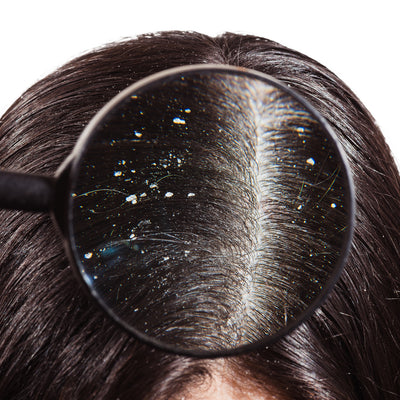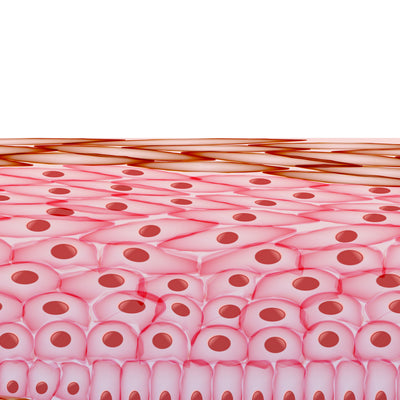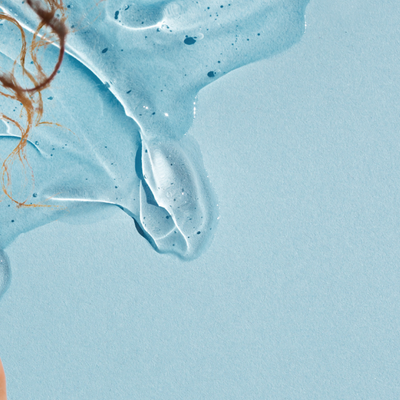
What Makes a Good Moisturizer?
Susan Walker| January 16, 2018
If someone were to ask me what is the number one challenge with natural hair my answer would be maintaining appropriate moisture levels. This topic has been covered extensively but dry hair is the number one complaint of many natural women I hear from and it warrants further discussion.
There has been a lot of confusion about what moisture actually is, how to moisturize hair and what ingredients should be included in an effective moisturizer. Products containing emollients such as mineral oil and petroleum, natural oils and butters as well as silicones have been marketed as moisturizers. Women have used these products with no relief to their dry hair. Brittleness has continued with ensuing breakage. Because of this we need to take a deeper look into this concept of moisturizing our hair, dissect the formulas and really understand what makes a product an effective moisturizer.
What is Moisture?
Moisture is property of water and this element makes the best moisturizer. Hydration contributes to the pliability and elasticity of the hair. Because water can quickly enter and exit the hair it’s difficult for it to remain moisturized for long periods of time with just water. Factor in conditions such as high porosity and chemical damage and keeping the hair hydrated seems as though it’s a losing battle. This is where an effective moisturizer is crucial.
What Makes a Good Moisturizer “Good”?
A good moisturizer will hydrate and nourish the hair deeply within the hair shaft. Water-based products are necessary. Anything anhydrous or without water such as a 100% oil-based product will not be an effective moisturizer. This is because oils and waxes DO NOT moisturize. Oils replace lost lipids from the hair, nourish it and can create a barrier so that moisture to seal in moisture but they do not moisturize. Therefore using an oil-based product with the hopes of moisturizing the hair will be an exercise in futility and will likely result in dry hair especially if there is no moisture in the hair shaft. Therefore a proper moisturizing product will contain humectants and emollients to draw water into the hair and occlusives to keep it there.
Humectants Can Be a Curly Girl’s Best Friend
I absolutely love humectants. I think that if they are used correctly, they can effectively improve moisture levels in the hair for days before remoisturizing is necessary. When it comes to skin, the essential components to skin moisturization are humectants, emolliency and occlusiveness. If we extrapolate these principles to hair care we find the same thing. Exactly what is a humectant? Humectants attract water from the surroundings by absorption into the hair, and adsorption onto the hair, at defined conditions, which include temperature and humidity.
Glycerin is probably one of the most popular and well-known humectants because it’s very effective and relatively inexpensive. It can absorb its own weight in water over 3 days. However, many naturals avoid glycerin products with glycerin because it can leave their hair feeling dry or looking frizzy. As a result, many natural hair care companies are manufacturing products that are “glycerin free”. I like to put things in context when it comes to the use of specific ingredients for hair care, their incorporation into a product and the result on the hair. To say that glycerin makes the hair hard or results in frizziness is relative depending on many things including the humidity, the product formulation and other ingredients in the product.
While glycerin is the most well-known humectant there are several others. This is where I take issue with some companies that market products as “glycerin free” because they will leave out the glycerin, but often add other humectants. These include agave nectar, honey, sodium PCA, sodium lactate, propylene glycol, urea, honeyquat, sorbitol and panthenol to name a few. Certain humectants have more moisture-binding capability than others and each humectant is unique bringing other properties to a formulation.
In high humidity frizz can ensue because moisture is taken from the environment into hair resulting in swelling of the hair shaft, raising of the cuticle and resulting poofiness. If hair is dry, damaged and overly porous it can be a hot mess! Humectants exacerbate this condition and some, such as glycerin, can become sticky once saturated with water. So in this type of weather or climates in which high humidity is characteristic, using products with high amounts of humectants can have a negative effect on the hair. This I understand and I’ve experienced the “cotton candy hair” during high humidity days this summer. However, the other side of this and one of the arguments against using glycerin (and by extension, it should apply to other humectants as well, no?) is this notion of it drawing water from the cortex of the hair in low humidity conditions such as dry, cold weather. The relevant research I found pertains specifically to the skin. Can this be applied to hair? Perhaps. Humectants are able to attract water from the atmosphere (if the atmospheric humidity is greater than 80%) and from the dermis. Even though they may draw water from the environment to help hydrate the skin, in low humidity conditions, they may take water from the deeper epidermis and dermis, resulting in increased skin dryness. For this reason, they work better with occlusive ingredients.
What does this mean for hair care? If the same principles apply then in lower humidity conditions humectants may contribute to hair dryness if water is lost from the hair. Therefore they should be paired with occlusive agents, better
known as SEALANTS. Sealants will work along with humectants to minimize the evaporation of water and subsequent dryness. This doesn’t just apply to glycerin but ANY humectant. What are good sealants? Natural sealants include butters such as shea butter and cocoa butter and waxes like beeswax and carnauba wax. Mineral oil and dimethicone are two other sealants that are very effective at minimizing water loss once used appropriately.
Emollients
Emollients are lubricating and are film-forming. They help smooth and seal the hair and can be oils, butters, hydrolyzed proteins, polymers, and cationic quaternary compounds.
To summarize an effective moisturizer will contain:
- Water
- Humectants
- Emollients
- Occlusives or sealants
When it comes to moisturizing hair you’ll definitely need to find which product works for you. Navigating through the abundance of products seems daunting but understanding the ingredient list can help you narrow down your choices. In order to evaluate whether a moisturizer will be good for your hair or not you’ll need to know a few things:
- Your hair texture (fine, medium, thick)
- Is the product a light lotion or thicker cream?
- Is there water in the product to hydrate the hair?
- Are there humectants in the product? Where are they in the ingredient list?
- Are there any emollients
- Are there any occlusive agents (aka sealants) in the product to minimize water loss to the environment?
About Susan Walker
 Susan is the CEO of Earthtones Cosmetics, a licensed Naturopathic Doctor and certified Trichologist with the World Trichology Society.
Susan is the CEO of Earthtones Cosmetics, a licensed Naturopathic Doctor and certified Trichologist with the World Trichology Society.
She has been a speaker and workshop presenter at various national and international conferences including the Taliah Waajid World Natural Hair Health and Beauty Show in Atlanta, the Toronto Natural Hair Show, The Canadian Naturalista Hair Expo and the Natural Hair Congress in Montreal.
Susan performs hair, hair loss and scalp consultations at TrichoSpa by Earthtones in Ajax, Ontario, a holistic skin, hair + scalp spa and curl care boutique. We specialize in corrective curl, scalp and skin care using trichological treatments for various scalp and hair concerns, and corneotherapy to correct skin issues. She has obtained various certifications in hair loss and scalp conditions.
In order to help her clients she has received her Laser Technician Diploma and certificates in Chemical and Mechanical Exfoliation, and Microneedling and Collagen Induction.
She is currently pursuing her Masters in Science in Cosmetic Science.
Featured Articles
-

-

Nurturing Your Scalp: Unveiling the Role of the Stratum Corneum
October 24, 2023 Susan WalkerREAD MORE -




